The Last Conklin Nozacs c. 1937–38
by Jim Mamoulides, February 7, 2023
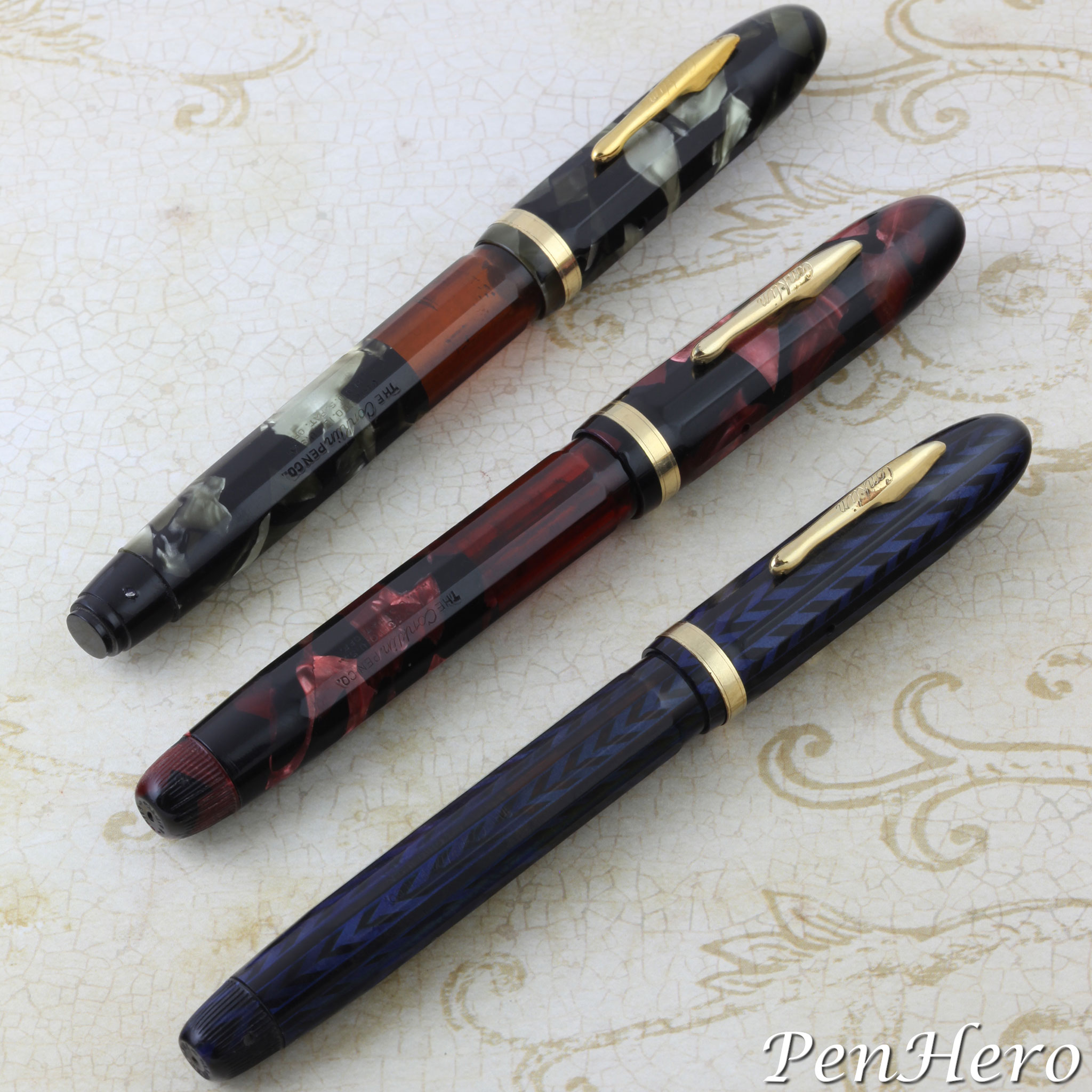 Final production Conklin Nozacs in gray marble and rose marble, shown with a blue V-Line Nozac
Final production Conklin Nozacs in gray marble and rose marble, shown with a blue V-Line Nozac
Last One Out of Toledo
These probably final production Conklin Nozacs don’t appear in the 1936 or 1937 catalogs, price lists, or advertisements. They have attributes seen on the 1937 Nozacs: there is no Word Gauge, and these pens have the 1936 patent clip and plain cap bands. The cap and lower barrel are made from a black and pearl marbled celluloid in rose, gold, and gray with the top of the barrel made of clear material. As with earlier 1935 model Nozacs, the two barrel pieces are threaded together. We also know these aren’t earlier pens because the previous marbled Nozacs from 1935 were Word Gauge pens made in Jet Black, Green Pearl, and a distinctly different Red Pearl. The official color and model names are not known, so collectors generally use rose marble, gold marble, and gray marble to describe these pens, and to distinguish them from earlier color names, which used pearl in the name.
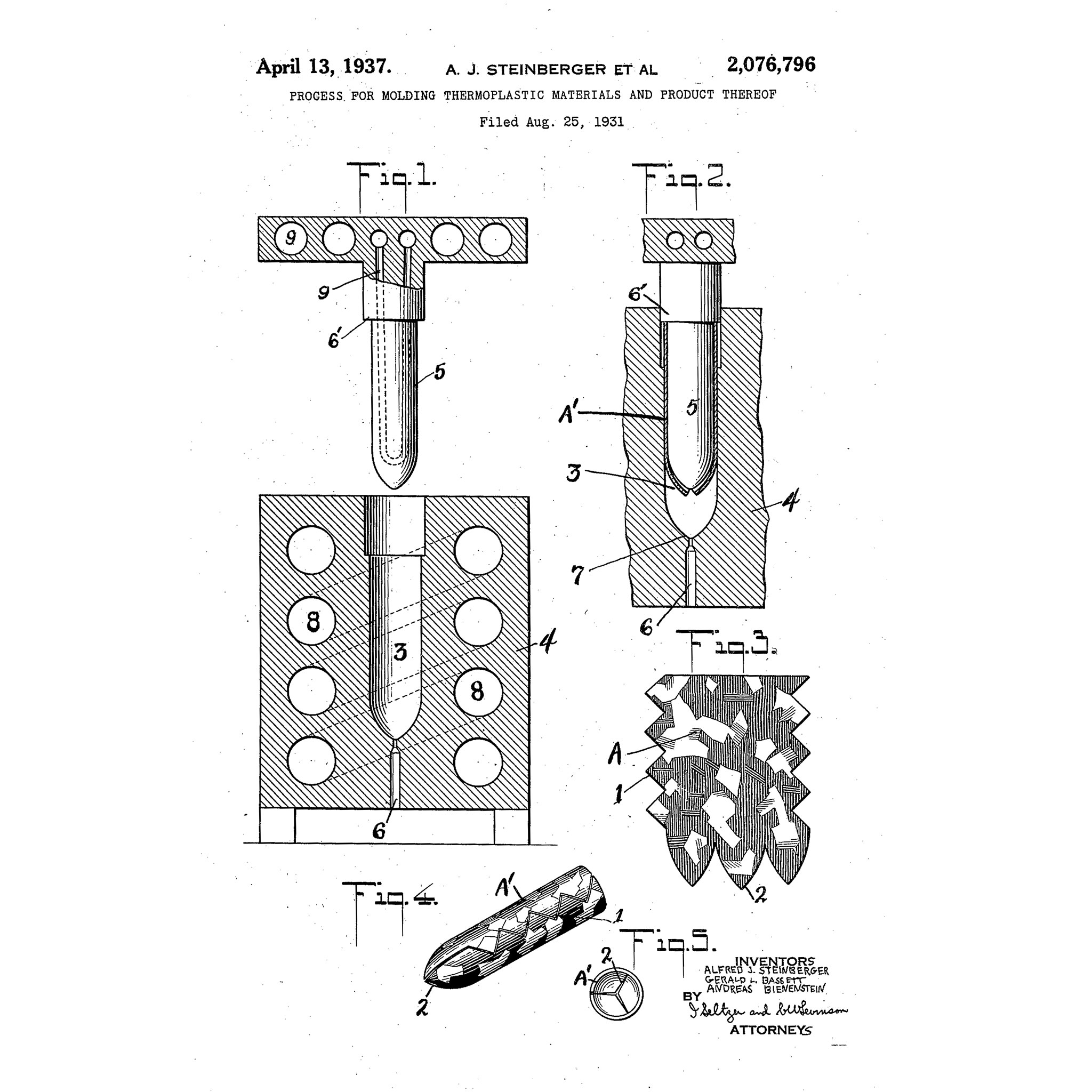 U.S. Patent No. 2076796 awarded April 13, 1937
U.S. Patent No. 2076796 awarded April 13, 1937
These new celluloids are easily distinguished from earlier ones used by Conklin and were likely made by the Celluloid Company (now Celenese), since they shared with Conklin U.S. patent 2076796 dated April 13, 1937 covering an improved molding process to make caps and barrels from celluloid sheets. The patent, filed August 25, 1931, describes a new process that seeks to eliminate blurring the design on celluloid sheets during the then currently used heat molding process where the two parts of the mold are heated to the same temperature and the sheet material is preheated before inserting into the mold and then formed using high pressure. The process must have worked well considering the elaborate celluloid designs on the Conklin Nozac Penline, V-Line and Chevron pens.
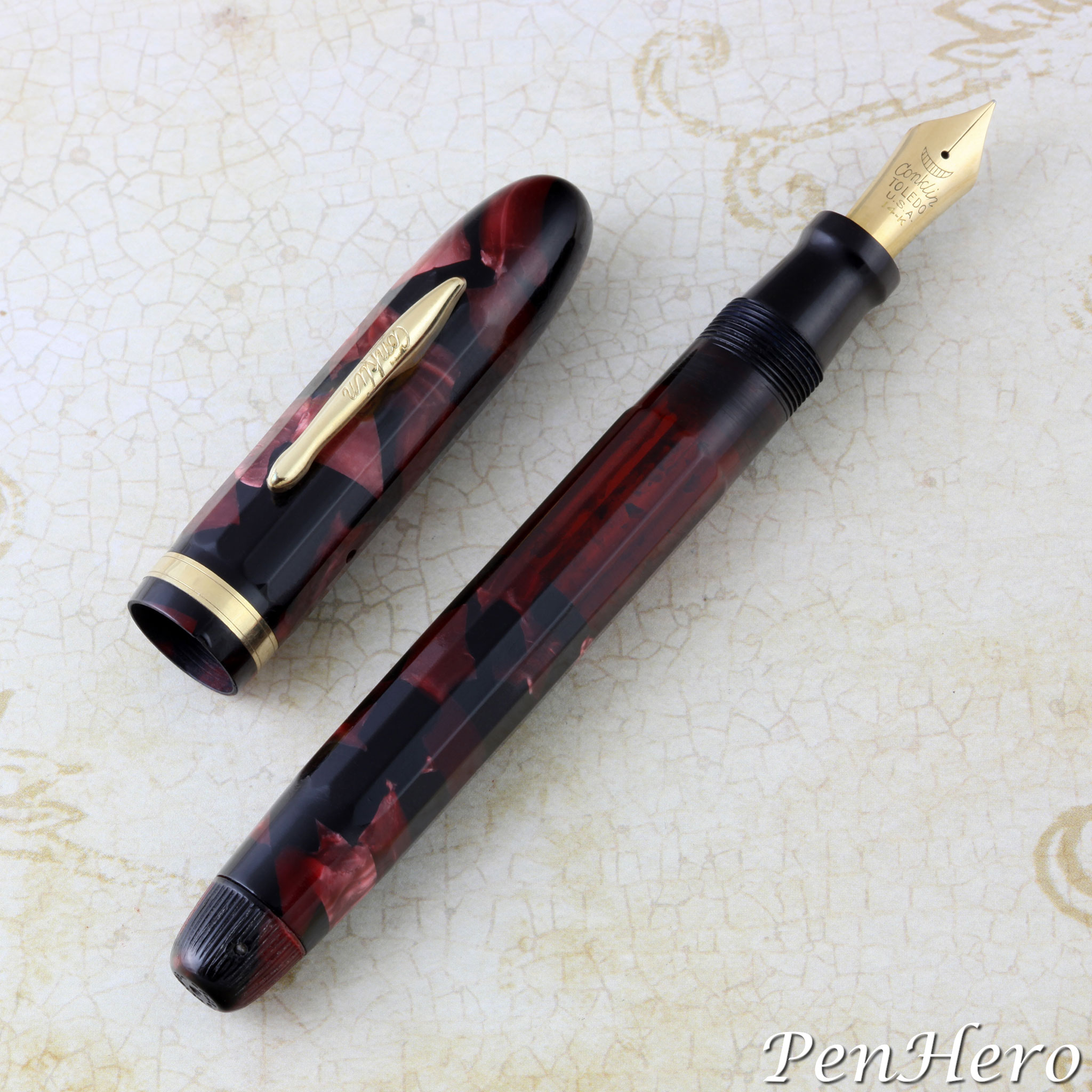 Conklin Nozac in rose marble c. 1937-38
Conklin Nozac in rose marble c. 1937-38
They feature a faceted cap and barrel in either 5M or 7M sizes—sizes that denote the ink capacity of a Word Gauge, Conklin's way of indicating how many words could be written with the remaining ink supply in M=1,000 word increments, though no Word Gauge indicator is imprinted. Both sizes are the same length, with the larger pen holding more ink. The top of the barrel (toward the section) is clear so the ink level can be seen and threads into the marbled bottom barrel where the piston-fill mechanism is mounted. They feature a single, wide cap band with two edge lines, the patented 1936 Conklin clip, and typically a Cushon Point nib. Of the three colors known, rose marble is probably the most prized.
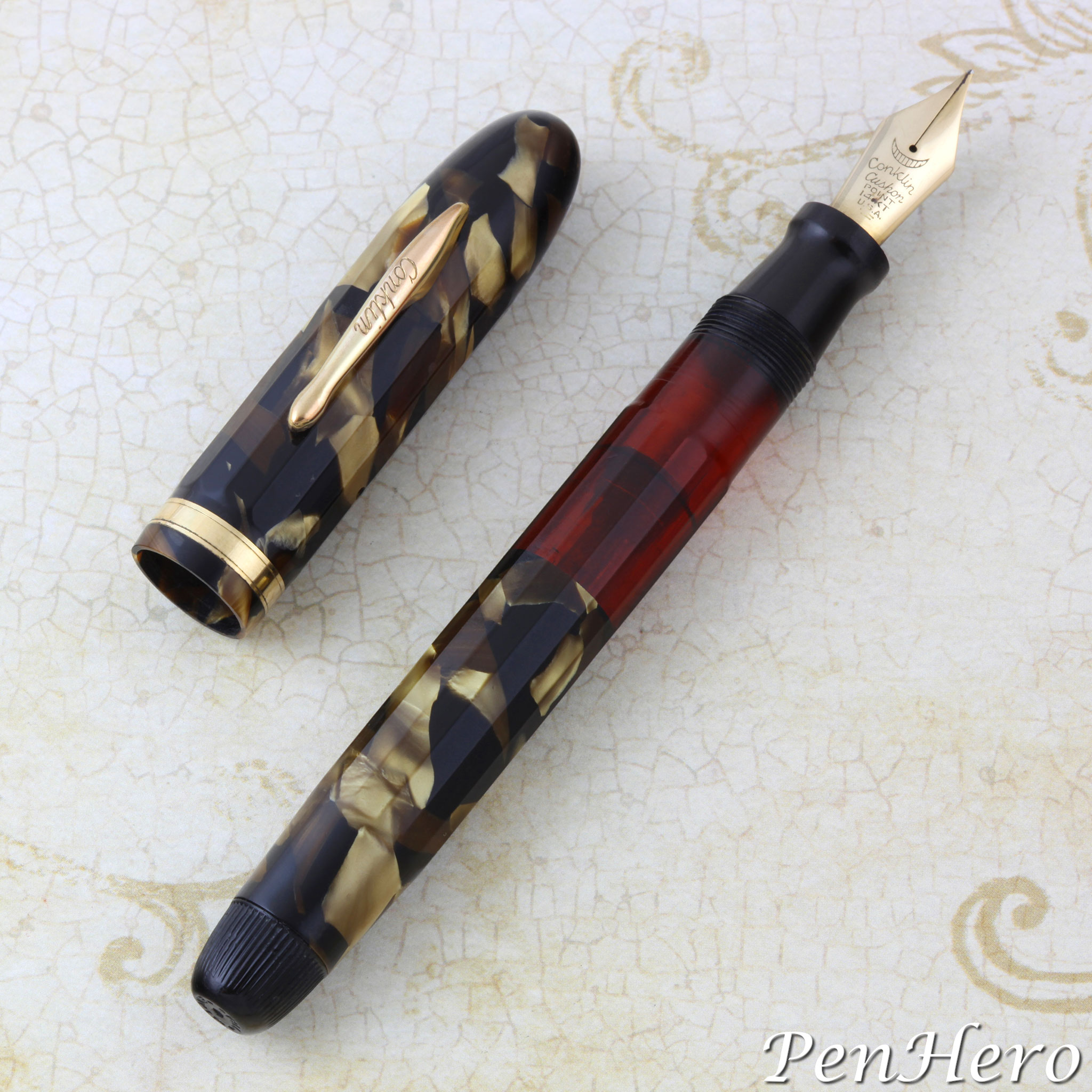 Conklin Nozac in gold marble c. 1937-38
Conklin Nozac in gold marble c. 1937-38
The fate of this model was determined by the company’s failing economic situation. A Chicago syndicate consisting of A. J. Parrson, M. H. Jacobs, and Max Horwitz purchased Conklin on July 13, 1938, and moved existing stock of unfinished pens and parts to Chicago. Examples of these pens have Toledo and Chicago imprints, indicating where final assembly was completed.
Identification Guide and Features
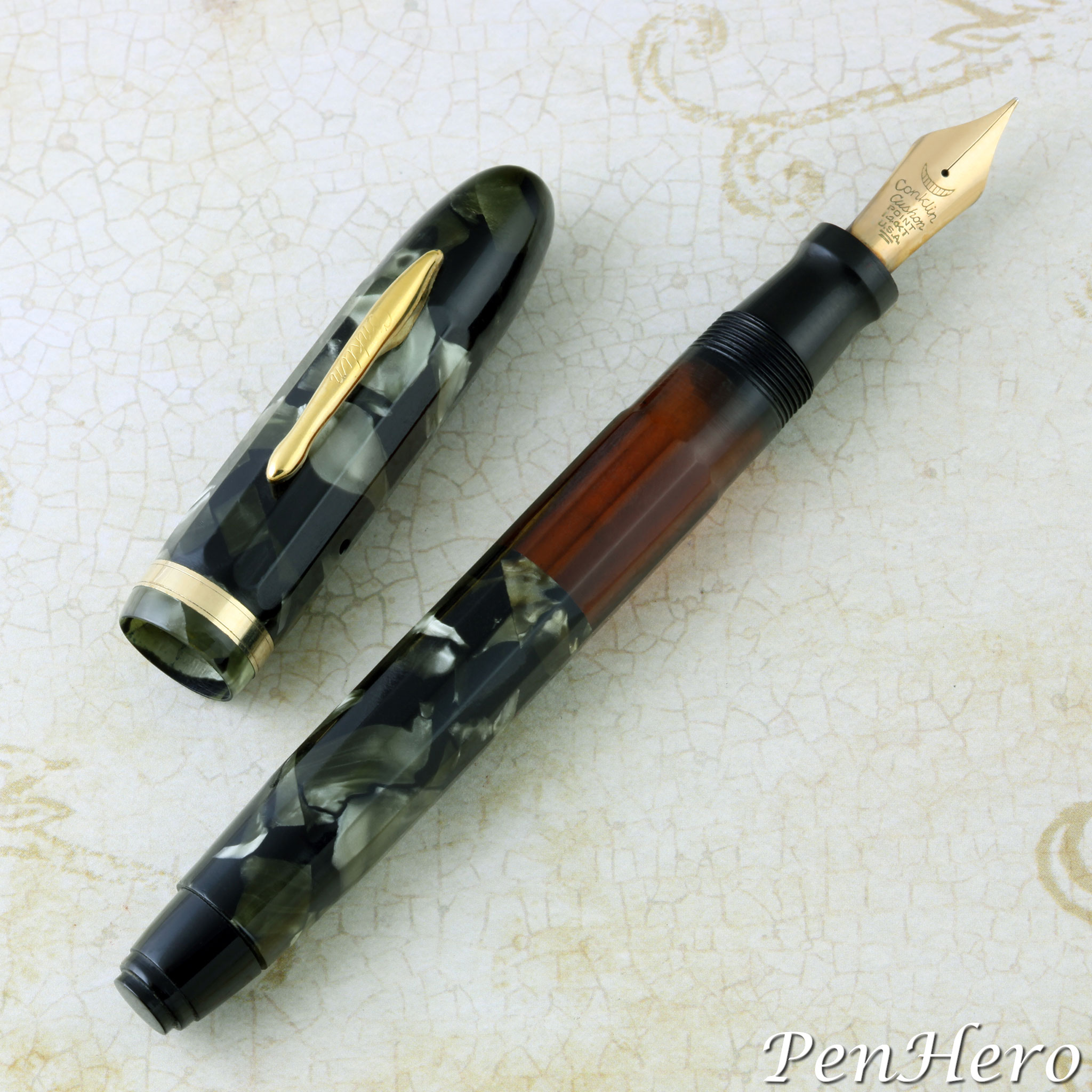 Conklin Nozac in gray marble c. 1937-38
Conklin Nozac in gray marble c. 1937-38
Since there are no primary reference materials, the best we can do is document from known examples to create the guide below. Variations include pens found with older Conklin nibs and pens with Chicago imprints.
- Faceted celluloid cap and barrel end made of marbled celluloid
- Known colors are rose marble, gold marble, and gray marble
- Two sizes: 14-sided oversize model (about 5 3/8 inches long) and slimmer 12-sided model of the same length
- Gold-filled clip and trim
- Plain cap band with edge lines
- Conklin stamped 1936 patent clip
- Cap unscrews
- 14 karat gold Cushon Point nib with Conklin Crescent logo
- Nib grades, probably from available stock, include extra-fine, fine, medium, coarse, medium stub, broad stub, left oblique, two way, and recorder in extra-fine, fine, and medium
- 5 3/8 inches long
- Piston-filling mechanism
- Pricing was probably the same as similar models, with the oversize pen at $7.50, slimmer pens at $5.00, and matching twist-action pencils at $3.50
This model was likely short lived, probably made only from 1937 until the company was sold in June of 1938. Conklin was having financial troubles at the time of production, leading to the sale and move to Chicago. Because these pens don’t show up in advertising, even in mass Nozac closeout ads from 1938, there is speculation that not many were made and examples today are very uncommon
Performance
As with other Nozacs, these pens fill by twisting the filler knob until the plunger is at the top of the barrel, dunking the nib into the inkwell, and twisting until the pen slowly sucks up the ink. The windowed barrel gives a view of the remaining ink level. Examples of these pens can be found with either Cushon Point or Conklin Toledo nibs and Toledo or Chicago imprints, indicating that if assembly was done in Chicago, it was likely done from remaining parts available. None of these exmaples were ink tested, but experience with other Nozacs with the same nib types indicate that they should write similarly, meaning they can be very nice writers. The fit and finish, gold plating and detailing of these pens is similar to other late Nozacs.
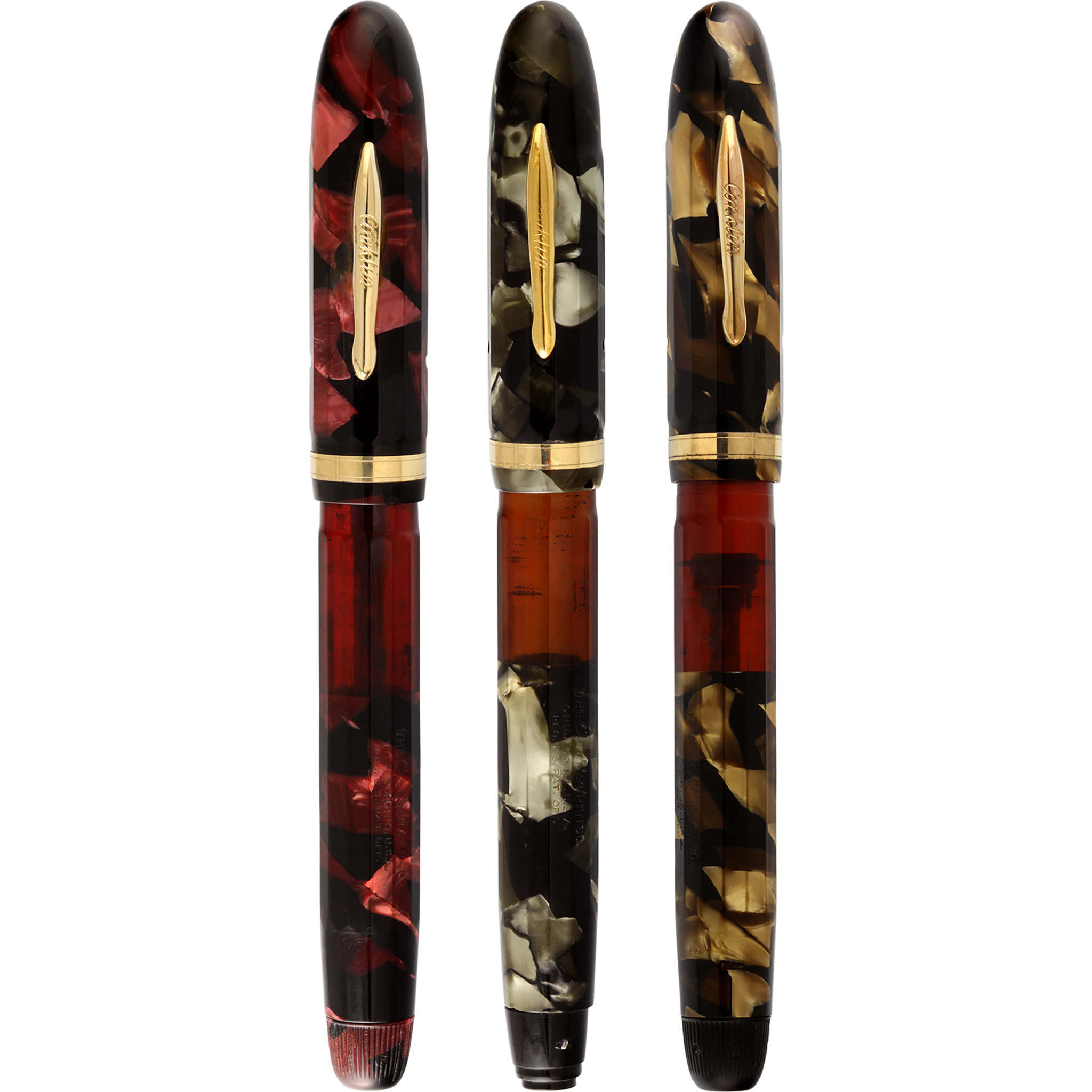 Conklin Nozacs in rose, gray and gold marble c. 1937-38
Conklin Nozacs in rose, gray and gold marble c. 1937-38
These last Nozacs appear to be among the most scarce. They can be confused with earlier marbled celluloid Nozacs, but are fairly easy to identify. They will have the Conklin stamped 1936 patent clip, a plain cap band with edge lines, and no Word Gauge markings. Some will have Chicago imprints.
These are beautiful pens whether they are working or not. A restored one will be more expensive than an unrestored example of the same pen, especially if care was taken to the writing aspects. Non-working Nozacs may not be restorable and you may want expert advice before buying or seek an example from a dealer who restores them. Some key questions for an unrestored Nozac include barrel clarity, if the piston moves up and down easily, if there are any cracks in the cap lip or barrel, and if the clip opens and closes tightly. When in doubt, ask a dealer or repair person who specializes in Conklin Nozacs.
A restored Nozac can be a great writer and a highlight to a collection. They hold a lot of ink and the faceted pens feel great in the hand. As said before, if your budget is limited, try to find a restored user grade pen and have fun with it!
Acknowledgements
Many thanks Pete Kirby and Dave Glass for their invaluable help on facts and history of Conklin Nozacs.
Pennant Fall 2019
This story appeared in the fall 2019 Pennant, the magazine of the Pen Collectors of America (PCA). You can learn more about joining the PCA and subscribing to the Pennant by clicking the link.
References
Cincinnati Enquirer, July 14, 1938, page 16
U.S. Patent No. 2076796 awarded April 13, 1937
Interact
Comments on this article may be sent to the author, Jim Mamoulides


